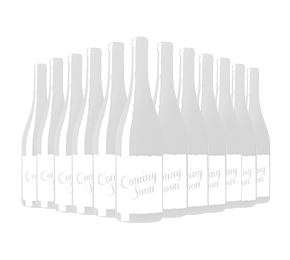Chat with Vinny
The excitement of opening a delicious bottle of wine can quickly be crushed if you discover your wine is ‘corked’ at the first sip. This is why your restaurant waiter will pour a small amount of wine for you to try before pouring a full glass – and why some wine enthusiasts will sniff the cork of a newly opened bottle. The winemaking process isn’t simple and involves great skill and creativity to produce delicious, premium wines. But as always, some things, including corked wine, are outside a winemaker’s control. So what is corked wine, how can you tell you have a corked wine and – most importantly – should you drink it?
Corked wine – what is it?
Corked wine doesn’t refer to a bottle sealed with a cork. Nor does it mean the wine has bits of cork in it if you’ve made a hash of removing the cork with a corkscrew.
‘Corked wine’ refers to wine that has been contaminated with cork taint due to the presence of a chemical known as TCA. Corked wine often has a strong smell of damp, soggy, wet cardboard and may taste dull and muted.

What causes corked wine?
Corked wine is primarily caused by the presence of a chemical compound known as TCA (2,4,6-trichloroanisole, science fans) in the wine. TCA is formed by a chemical reaction that can occur in the cork. Here’s the science-y bit – this reaction generally involves three elements:
Phenols – These naturally occurring compounds can be found in a variety of places, including the cork tree bark from which the corks are made, the wooden barrels used to store and age wine, and even in the wine itself.
Chlorine – This may come from sterilisation and bleaching products used in cork production. It could also come from other natural sources within the winery or vineyard environment.
Moulds – These fungi are present in most environments and can exist naturally in the cork or the winery.
When moulds come into contact with phenols and chlorine, they can trigger a reaction which creates TCA. Even though the amounts involved are tiny, TCA is highly potent, and while sensitivity differs between individuals, most people can detect it, even at very low levels. TCA is not harmful to health, but it can affect the aroma and taste of a wine, often giving it a damp, musty smell and muting its flavours.
How can you tell if a wine is corked?
Smell
Clocking a corked wine is mostly about how it smells. When you first open a bottle and take a sniff, you might expect notes of juicy fruits, warming spices, herbs or an oaky influence. But a corked wine typically smells of damp, soggy, wet or rotten cardboard. Some people also describe it as a wet dog or damp cloth smell. These aromas are immediately noticeable and hard to ignore. If your wine has these distinct aromas, it’s probably corked.
Taste
The taste of corked wine is less distinct than its smell. It can be described as dull or muted, with the fruit flavours noticeably diminished. The wine often lacks the vibrancy or brightness you would expect from a particular grape variety or style of wine.

Which wines are most at risk of being corked?
Corked wine is not exclusive to any particular type, style or region of wine. Any bottle of wine sealed with a natural cork is potentially at risk of cork taint, as the primary suspect for causing it – TCA – forms in the cork. The good news? The risk of wine being corked is very small. The Cork Quality Council estimates that 1-3% of the corks tested have high TCA levels. Some cork producers have switched to using peroxide bleaching instead of chlorine to lower the risk of wine becoming corked. Many wineries are now using synthetic corks or screw caps to eliminate the problem. If you come across a corked wine, don’t be afraid to contact the retailer you bought it from as soon as you can – shops and restaurants often have policies to replace a spoiled bottle.
Can you still drink corked wine?
Corked wine is still drinkable and won’t make you ill, but it won’t be the most pleasant experience compared with a wine that tastes just as the winemaker intended. However, all is not lost, as there are several things you can do to make your corked wine taste better. One option would be to turn it into a sangria-style punch, adding sliced fresh fruits, liqueurs, spices, herbs and sparkling water for a long, refreshing drink. You could also try serving corked wine at a very chilled temperature – this can mute those damp, musty flavours and aromas.
Can you cook with corked wine?
Yes, you can! If you cannot return your wine promptly, there’s no reason why you can’t make good use of it. Any heat used when cooking typically reduces the perception of the TCA compound that causes those dank, damp flavours and aromas.
However, a corked wine’s natural flavours and aromas will have less depth and complexity than untainted wine. This is worth considering, as it could impact your cooking.

Alternatives to corks
Some winemakers now use alternatives to traditional cork to avoid their wines being compromised by cork taint. The two most common are synthetic corks and screw caps. Synthetic corks are a safer alternative to natural ones because they can’t be infected and harbour TCA. They can be made to look and sound like traditional corks. However, synthetic corks do have downsides. They don’t always form a perfect seal, which can affect a wine’s ability to age gracefully, and they can be tricky to remove. Screw caps could be considered a good option as they can’t harbour TCA. They are also easier to open and reseal if you don’t want to finish the bottle. Screw caps aren’t just for cheaper wines either – winemaker in countries such as New Zealand and Australia use them for their premium wines. Remember, there’s no need to allow the fear of corked wine to limit your wine choices – discovering that your favourite bottle isn’t perfect is likely to be rare. Read our top tips to pick the perfect corkscrew
About the author
Brogan Wilson
Qualified to WSET Level 2 Wine, Brogan is a relatively new member of the team, having joined in September 2023. She previously worked as the sole copywriter at a creative marketing agency, and before that, as a primary school teacher. At Laithwaites HQ, you’ll find her growing her knowledge, asking lots of questions, and crafting both digital and print copy. An ardent red wine drinker, Brogan is also fond of Crémant.

